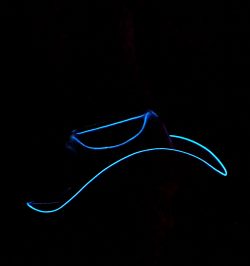The terms Seabirds, Shorebirds, and Waterbirds as definitions are quite ambiguous and used interchangeably depending on the resource from which one gathers information. Therefore, in this article we’ll use the term Seabird as the catchall word for the birds about which we supply these fun and interesting facts.
- If seabirds held Olympics, the gold medal for measurable long distance flight would be handed over to the Arctic Tern every year. This species travels round trip from the Arctic to the Antarctic and back each year—a total distance of over 22,000 miles! Not measurable, however, is the distance traveled by the Sooty Tern, which is known to stay in flight for years without touching ground.
- Seabirds drink only sea water but never get sick because of desalinization glands in their heads that filter the salt from the water which is excreted through their nostrils.
- Emperor penguins are the deepest divers, reaching depths of as much as 870 feet. Of the flying birds, loons win the deep diving contest reaching depths of up to 262 feet.
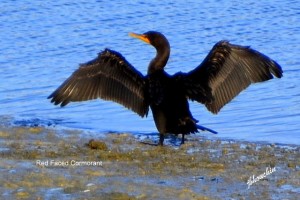 Cormorants are known as “pursuit divers”. They dive from the surface using their feet for underwater propulsion. Divers have reported seeing them snagging fish over 100 feet below the surface. So called “plunge divers” which include pelicans, gannets, boobies and terns can reach depths of up to 50 feet from the vertical momentum gathered by beginning a dive from as high as 150 feet, in the case of a gannet.
Cormorants are known as “pursuit divers”. They dive from the surface using their feet for underwater propulsion. Divers have reported seeing them snagging fish over 100 feet below the surface. So called “plunge divers” which include pelicans, gannets, boobies and terns can reach depths of up to 50 feet from the vertical momentum gathered by beginning a dive from as high as 150 feet, in the case of a gannet.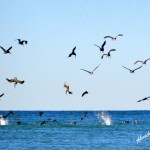
- The Cormorant has been trained and used by humans for fishing in Asia uninterrupted for 1300 years. They tie a snare at the base of the Cormorant’s neck allowing it to only swallow smaller fish. When a larger fish is caught in the throat the bird returns to the raft and the fisherman dislodges it. Of the 38 species worldwide, 4 occur in Mexico.
- Brown Pelicans, which we mainly see on the Sea of Cortez, are skilled fliers and aerial hunters.
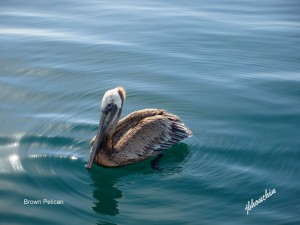 Ironically, in the world of aviation, any flying officer that is assigned duties on the ground is known as a ‘pelican’.
Ironically, in the world of aviation, any flying officer that is assigned duties on the ground is known as a ‘pelican’. - The name for pelican in Portuguese/Spanish is “Alcatraz”, from Arabian Al-qadus meaning “water carrier”, because it was believed that pelicans carried water for their young in their large beaks.
- Our own Sea of Cortez is home to the smallest seabird in the world, the Least Storm Petrel which weighs 1 oz.
- Frigate birds are tropical sea birds, but their feathers are not waterproof! They don’t swim or walk and can’t take off from a flat surface. They have the largest wing span to body weight of any bird, able to stay aloft for more than a week. They are agile flyers and although able to grab the smaller fish from the surface
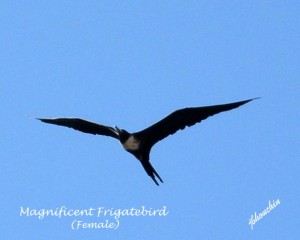 without getting their wings wet they are unable to catch their own bigger fish by diving into the sea or swimming (as their feathers would become waterlogged). Therefore they have developed great piracy skills to get larger fish from the diving birds. A frigate bird will bully other birds in flight into regurgitating their food, and then grab the food the other bird has dropped before it falls into the sea. Of the five species of frigate birds in the world two are found in Mexico.
without getting their wings wet they are unable to catch their own bigger fish by diving into the sea or swimming (as their feathers would become waterlogged). Therefore they have developed great piracy skills to get larger fish from the diving birds. A frigate bird will bully other birds in flight into regurgitating their food, and then grab the food the other bird has dropped before it falls into the sea. Of the five species of frigate birds in the world two are found in Mexico. 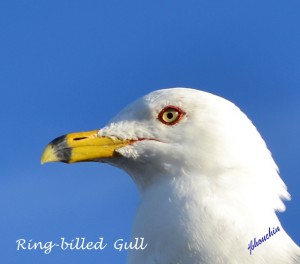 Sea birds have their own natural built-in sunglasses. Their eyes contain special droplets of red oil in the retinas, which act as a sun filter to help with the glare from the sea and sand.
Sea birds have their own natural built-in sunglasses. Their eyes contain special droplets of red oil in the retinas, which act as a sun filter to help with the glare from the sea and sand.- Birds in general (not just seabirds) have the best developed color vision in the whole animal world.
- The pink coloration of the Flamingo comes from the pigments contained in the microscopic water plants and animals on which they feed.
- You haven’t walked the beach many times in Puerto Peñasco if you’ve yet to see a blue heron wading near the shore spearing small fish and crustaceans. As a wader, they are a gregarious bunch—but “bunch” is not the word for a bunch of herons. The collective name for herons is a ‘siege of herons’. So, what do you call a colony of brooding herons? Nope. Not a rookery like with most bird colonies. More specifically they are a heronry!
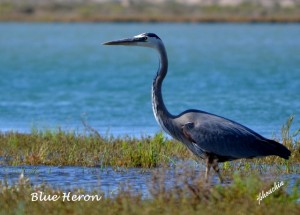
- Proliferation of a species is dependent on protecting the young from predators. Nature has given the relatively smaller members of the animal kingdom many instinctive tricks to protect their young. A mute swan, for example, hisses and grunts at intruders that get too close to its nest, but can deliver a blow with its wings that is so powerful it could break a man’s arm! Other birds like the plover, will stagger around with one wing hanging, pretending to be injured, to take a predator’s focus away from their nests on the ground.
- The scientific name for the kingfisher is ‘halcyon’, from the Greek words ‘hals’ meaning sea and ‘kyon’ meaning conceiving. In Greek mythology it was said a
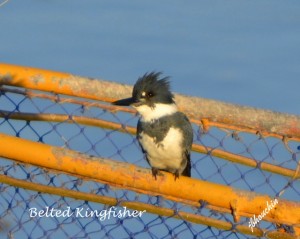 kingfisher made a floating nest on the sea, and the eggs successfully hatched when the weather was calm and clear (from which the term ‘halcyon days’ comes). Kingfishers have superb eyesight whether they are in air or under water. Of the 93 species of Kingfishers, five occur in Mexico.
kingfisher made a floating nest on the sea, and the eggs successfully hatched when the weather was calm and clear (from which the term ‘halcyon days’ comes). Kingfishers have superb eyesight whether they are in air or under water. Of the 93 species of Kingfishers, five occur in Mexico.
This blog is brought to you by The Sonoran Resorts Sales Group, Jim Ringquist, Director of Sales


